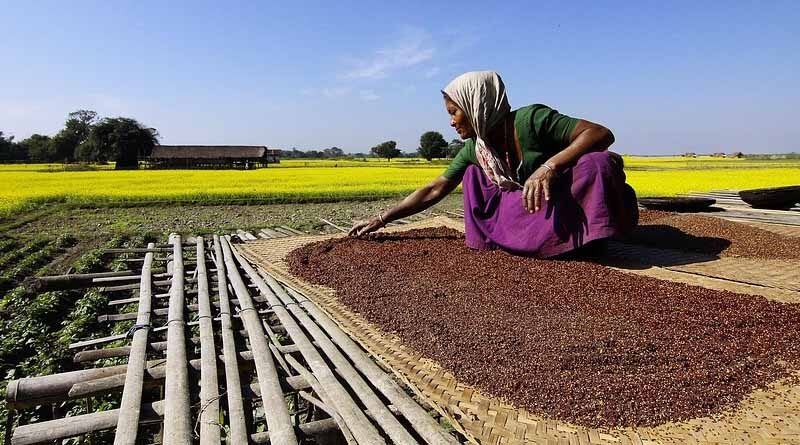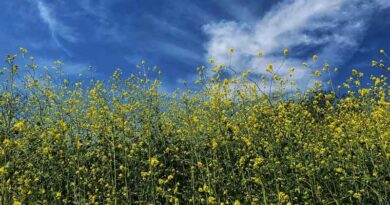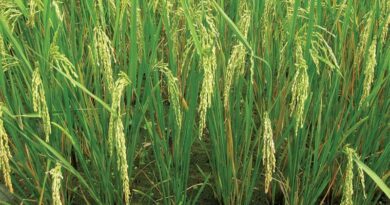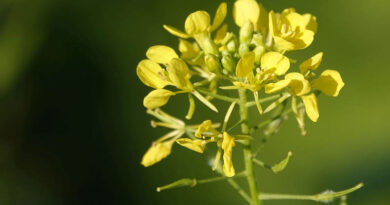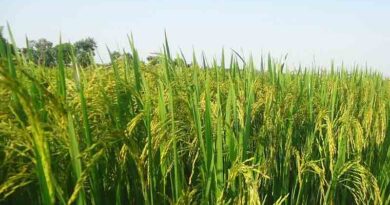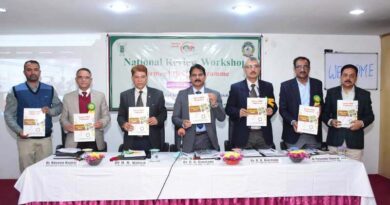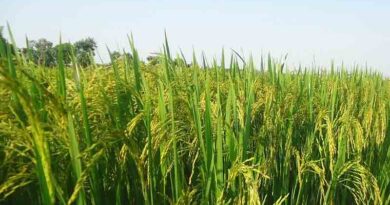Allowing GM crops: Threat to environment and human life in India
Guest Writer: Vinod K. Shah, Independent Journalist
11 January 2023, New Delhi: The Supreme Court has to decide on the petition to destroy the genetically modified mustard plant before it flowers. The matter of banning the commercial cultivation of GM Mustard DMH-11 in the country is already under consideration. The petitioner has termed its flowers and seeds as a threat to the environment.
The issue of allowing commercial cultivation of genetically modified food crops in the country has been under debate for the last two decades at various forums. Most of the environmentalists and agriculture experts in the country have been considering more advantages and fewer disadvantages in genetically modified food farming. But the Government of India is eager to produce GM Mustard that it tacitly approved the production of its seeds in the country before the recent rabi sowing, as soon as the Genetic Engineering Appraisal Committee (GEAC) approved GM Mustard for commercial cultivation.
The institute which developed the GM Mustard crop also made the seed of the crop available for use. Even after being disputed, it was not taken into account that instead of doing the experiment related to productivity in the open, it should be done in a boundary wall, poly, or greenhouse.
Opposition to GM Mustard
For the last 20 years, there has been a protest against GM Mustard in the country due to the apprehensions of its harmful effects on the environment. Its seeds were prepared in India in 2002 by crossing the Indian variety Varuna with the Eastern European variety Early Heera-2 and by changing the genetic structure.
In 2017, the Genetic Engineering Approval Committee of India permitted commercial cultivation of this GM mustard in the country. But after the petition filed by the environmentalists in the Supreme Court regarding the apprehension of its environmental hazards, the matter is on hold.
Since then, neither the agricultural research centers of the country nor the government has done much experiment regarding the environmental concern. No progress has been, nor has an attempt been made to take opinions from the farmers and experts of the country in this regard.
Once again commercial permission was given in its favor saying that this type of cultivation would increase the production of oilseeds in the country by 30 percent.
Haste of the government
If we talk about the eagerness of the government on this issue in India, then in the year 2020-21, the share of mustard oil in the country’s edible oil consumption was 14.1 percent. In the year 2021, the Government of India spent an amount of $19 billion on the import of palm and sunflower oil alone. India is the world’s largest importer of edible oil. India imports its requirement from Argentina, Brazil, Indonesia, Russia, and Ukraine.
India’s concerns are bigger than the Russo-Ukraine war. Food inflation is increasing continuously. This is the reason why the central government behind the scenes is hastening to promote its commercial cultivation without knowing much about the consequences of this controversial issue.
Increase in Mustard cultivation
Mustard is being cultivated on about 7.5 million hectares in Punjab, Haryana, Rajasthan, Uttar Pradesh, and Madhya Pradesh. Also, through the flowers of this crop, 60 percent of the country’s total honey production is being done. This provides additional income to the farmers.
Because of climate change, the average production of wheat and pulses is decreasing due to premature hot summers in North India for the last two years. Due to this, the farmers of this region have started taking interest in the short-duration mustard crop. In the current rabi season, a record increase in the area of the mustard crop has been recorded in Madhya Pradesh, Rajasthan, and Uttar Pradesh.
The production of mustard through regular seeds in India is yielding 1,000 to 1,200 kg per hectare. While the global production from genetic seeds is estimated to be 2000 to 2200 kg per hectare. In India, there is also less availability of water for irrigation in mustard crop areas along with seasonal adversity.
Due to the availability of sufficient irrigation and new seed varieties, the farmers of the country have now started taking production up to 1,800 kg per hectare. This is without the use of herbicides and with minimum inputs.
In India, mustard seeds are not only used in edible oil but their leaves are widely used in animal feed along with vegetables. Excessive use of weedicides will create health problems for laborers working in the fields and humans and animals using green crops.
In the past years alone, eighty thousand farmers and laborers have become victims of cancer due to the use of increasing weedicide in America. For this, judgments have been given in the US court against the glyphosate firm to pay compensation worth crores of rupees.
Fertile land becoming barren
In a previously published report of the Soil Water Conservation and Research Institute, Dehradun, it has been told that every year 5,334 lakh fertile soil of the country is being destroyed and converted into barren land due to the use of excessive pesticides, and fertilizers, and weedicides.
On average, 16.4 tonnes of soil per hectare in the country loses its organic content due to the adverse effects of toxic chemicals. On one hand, the Government of India talks about zero-budget organic farming, talks about soil health schemes, and on the other hand, it allows GM mustard to be cultivated through the back door, in which there is a lot of possibility of indiscriminate use of weedicides.
Increased cost of farming
The results of BT cotton are in front of the country. If we look at the government figures, the cotton production in the country has increased ten times due to the use of Bt cotton. But on the contrary, due to the excessive use of pesticides, fertilizers, and weedicides used in crops, the production cost of the farmers has increased multifold.
Effect on the fertility of bees
The concern of environmentalists is not wrong that the excessive use of herbicides will affect the reproductive capacity of bees and other crop-friendly insects which help in pollination. This is one factor because of which the production capacity of crops is affected.
The production data of the Indian crop seed Varuna has been better as compared to the production data of developed GM Mustard DMH-11.
Today, if we talk about DMH-11, then this research is twenty years old. While developing countries are using DMH-4. The discussed recommended GM mustard for use in India, DMH-11 is outdated at the global level.
While the production of Pusa 0031, developed by IARI yields 2,200 kg per hectare. In such a situation, instead of allowing GM mustard in the country, the government should promote completely indigenous varieties developed in Indian universities and research centers.
Also Read: Garuda Aerospace signs MoU with Rallis India
(For Latest Agriculture News & Updates, follow Krishak Jagat on Google News)

